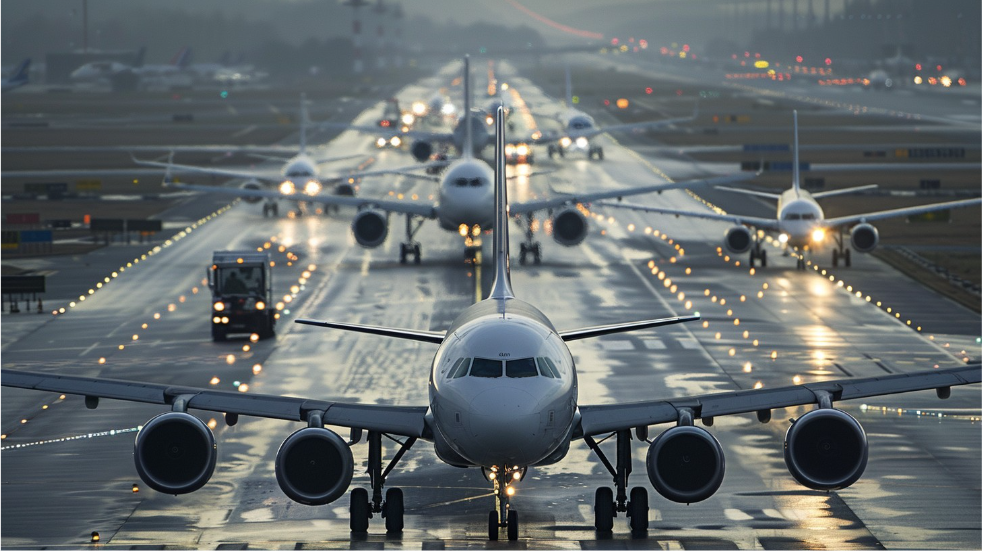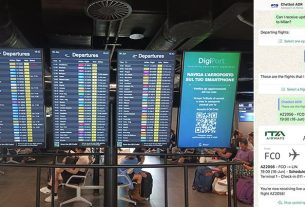May 29, 2025 — Dallas, TX — One of the busiest airports in the world ground to a complete halt early Wednesday morning as a powerful thunderstorm system swept through North Texas, forcing the Federal Aviation Administration (FAA) to impose an emergency ground stop at Dallas Fort Worth International Airport (DFW). The disruption is rippling across the nation’s air traffic system, causing mass cancellations, delays, and logistical strain from coast to coast.
All major U.S. carriers—including American Airlines, Delta, United, Southwest, Alaska, JetBlue, and Spirit—suspended operations at DFW, leaving tens of thousands of travelers stranded during peak travel hours. The halt comes just days after Memorial Day weekend, compounding delays and economic impacts at a time when travel demand is typically surging.
A Sudden and Total Stop
By 8:00 a.m. local time, DFW—America’s second-busiest airport for aircraft movements—had ceased all departures and arrivals. The FAA cited extremely hazardous weather conditions, including lightning, high winds, torrential rain, and hail, as the basis for the rare and sweeping stop.
Weather experts attributed the system to a fast-moving cold front clashing with unstable atmospheric conditions, causing unusually intense storms across northern and central Texas.
Passengers Stranded, Airlines Scramble
Departure boards across the airport turned red as gates closed and crews stood down, leaving travelers with no answers and nowhere to go. Airlines initiated mass rebookings and cancellations, but with operations frozen, few alternatives were immediately available.
The disruption has already caused domino delays at major hubs like Chicago O’Hare, Atlanta Hartsfield-Jackson, Los Angeles International, and Miami International, as many routes depend on connections through DFW.
International flights bound for North Texas were either rerouted or grounded at departure points abroad, triggering a global knock-on effect across carrier schedules.
Economic Toll on Travel and Local Economy
As DFW processes more than 86 million passengers annually and connects to 73 international destinations, the shutdown presents not just a local inconvenience, but a global disruption to air travel and supply chains.
For airlines, the grounding of even one aircraft represents tens of thousands of dollars in losses per hour. With an entire fleet paused, revenue shortfalls, rebooking costs, and compensation claims are mounting by the minute.
Nearby hotels are being overwhelmed by stranded travelers, leading to surging room prices and limited availability. Ride-share platforms and taxis have reported record-high demand, with surge pricing pushing fares well above average. Rental car agencies in Dallas, Fort Worth, and even as far as Austin and Houston are rapidly depleting inventory.
Tourism and Events in Jeopardy
Local tourism boards are bracing for fallout. The Dallas–Fort Worth area, typically a magnet for conventions, cultural events, and summer tourism, could see short-term economic losses as plans are postponed or cancelled. Regional airports may absorb some of the diverted traffic, but weather conditions and limited capacity will restrict how much relief they can offer.
Meteorologists Warn of Growing Volatility
This storm is the latest example of increasingly erratic weather patterns affecting major transportation hubs. More than two inches of rain fell on Fort Worth overnight, placing the city under a flood watch, while wind gusts exceeding 50 mph created dangerous conditions for takeoff and landing.
Experts note that climate instability is complicating travel forecasting and scheduling, particularly during transitional seasons such as late spring.
What Airlines and Authorities Are Saying
Airlines are working to waive change fees, offer flexible rebooking, and provide accommodations where possible. Still, with limited staff and escalating demand, many passengers are facing multi-hour waits at service counters and incomplete information online.
DFW Airport has increased its communications via social media and public announcements, while urging passengers to avoid coming to the airport unless their flights are confirmed as active.
The FAA has described the likelihood of lifting the ground stop by afternoon as “medium” but warned that changing weather conditions could force extended restrictions.
What Travelers Should Do Now
Passengers affected by the storm are advised to:
- Check flight status frequently via official airline apps and FAA advisories.
- Avoid unnecessary travel to the airport until flights are confirmed.
- Seek hotel accommodation immediately, as availability is shrinking quickly.
- Consider alternative airports such as Dallas Love Field (DAL), Austin-Bergstrom (AUS), or Houston’s airports (IAH and HOU).
- Monitor weather alerts closely, as the system may impact other travel corridors.
A Wake-Up Call for Global Aviation
This isn’t just a localized storm delay—it’s a stark illustration of the fragility of global air travel infrastructure in the face of increasingly severe weather events. With climate-related disruptions becoming more frequent, industry experts are calling for greater investment in weather resilience, contingency planning, and real-time communication systems.
While flights may begin to resume later Wednesday or Thursday, the cascading consequences—from lost business to missed family events—will continue to unfold in the days ahead.
Bottom Line: As skies darken over Texas, the storm at DFW is a reminder that air travel’s greatest challenge may no longer be mechanical or logistical—but environmental. Travelers and the industry alike must prepare for a world where extreme weather is the new normal.



